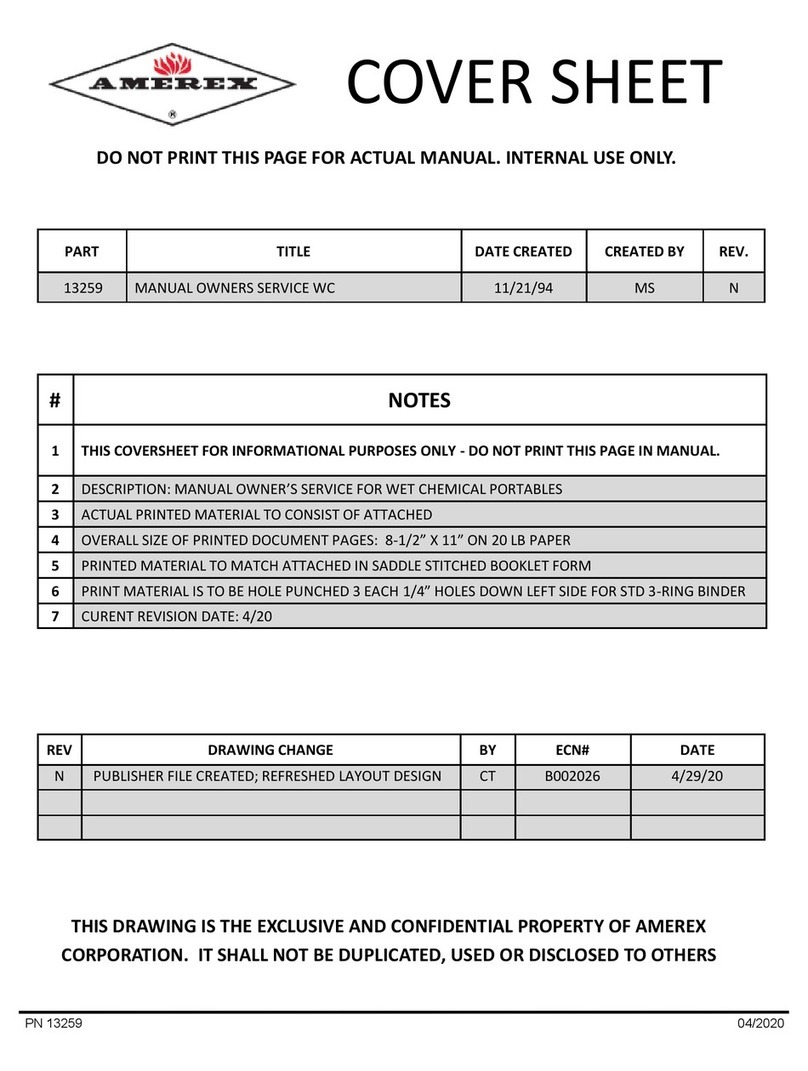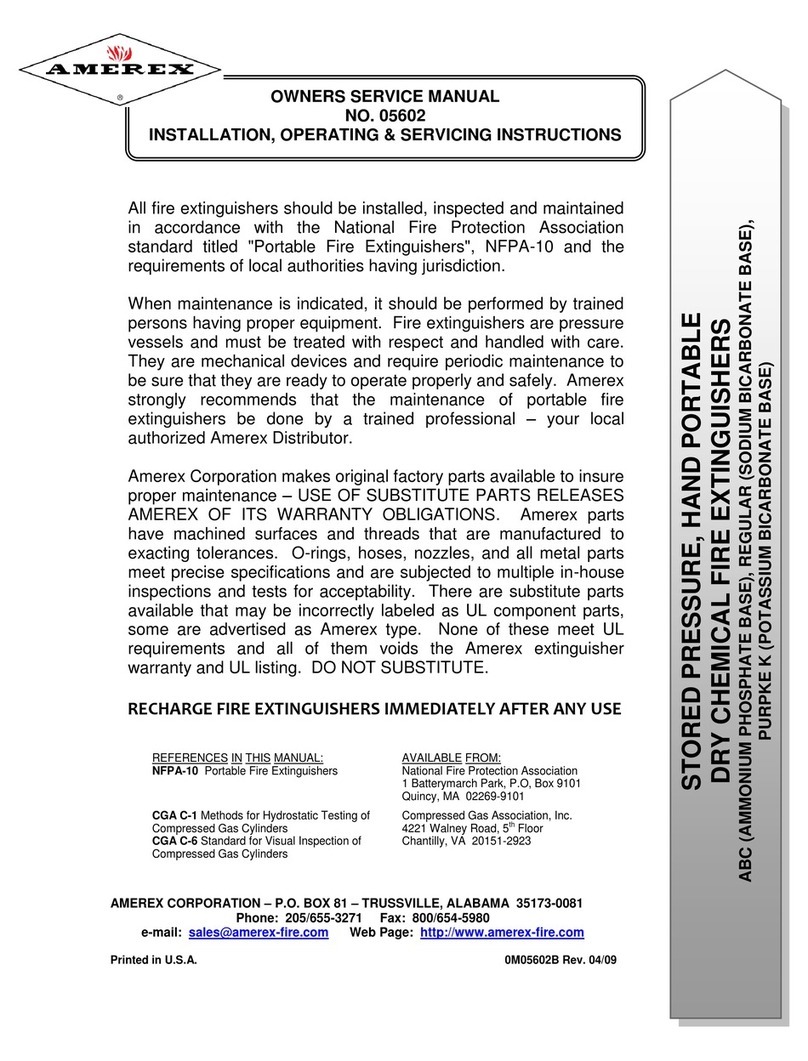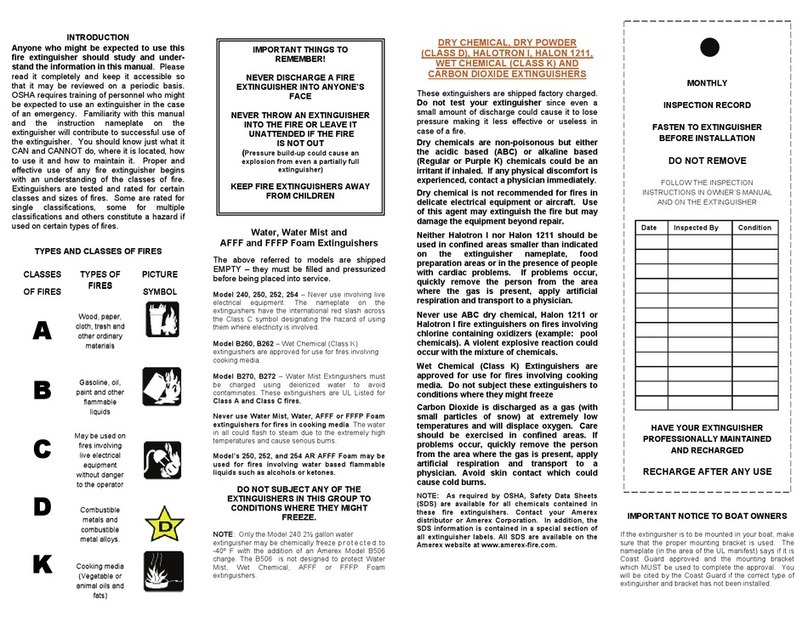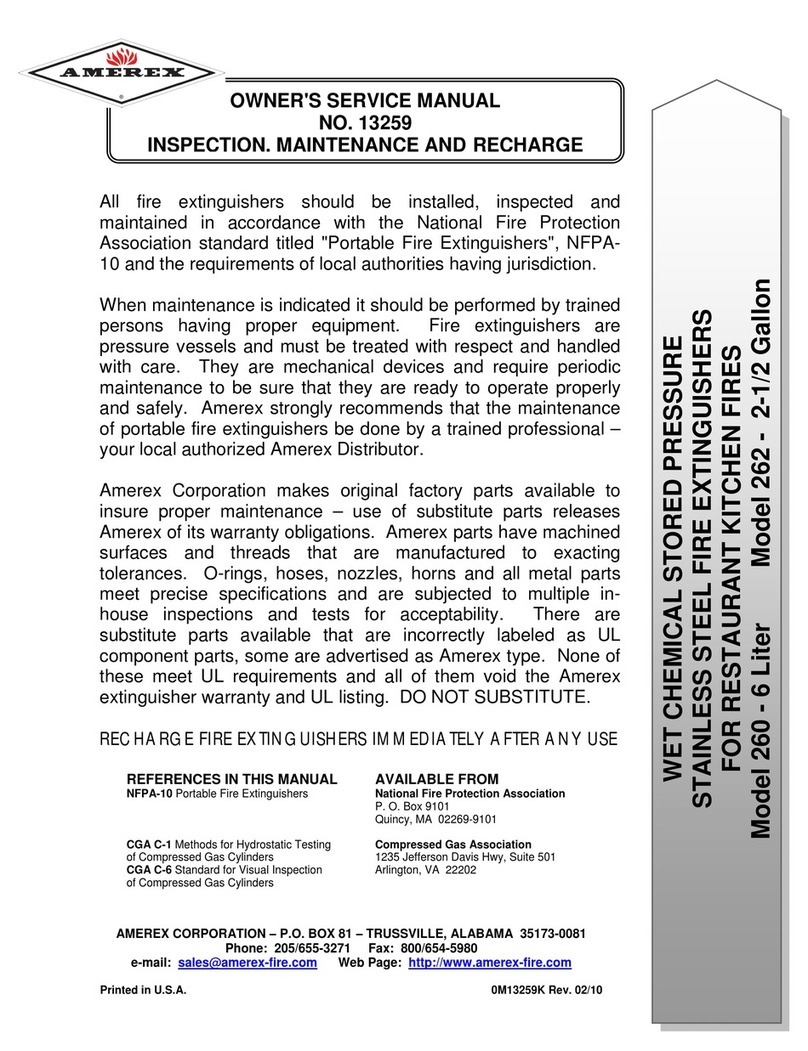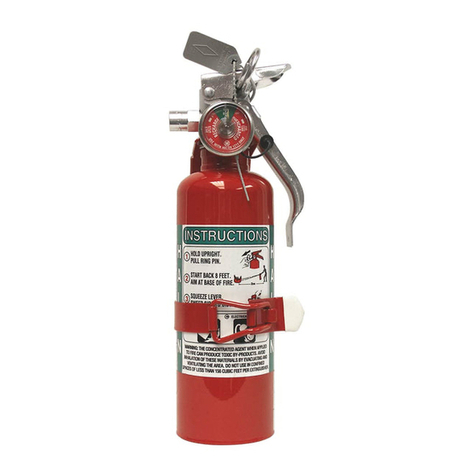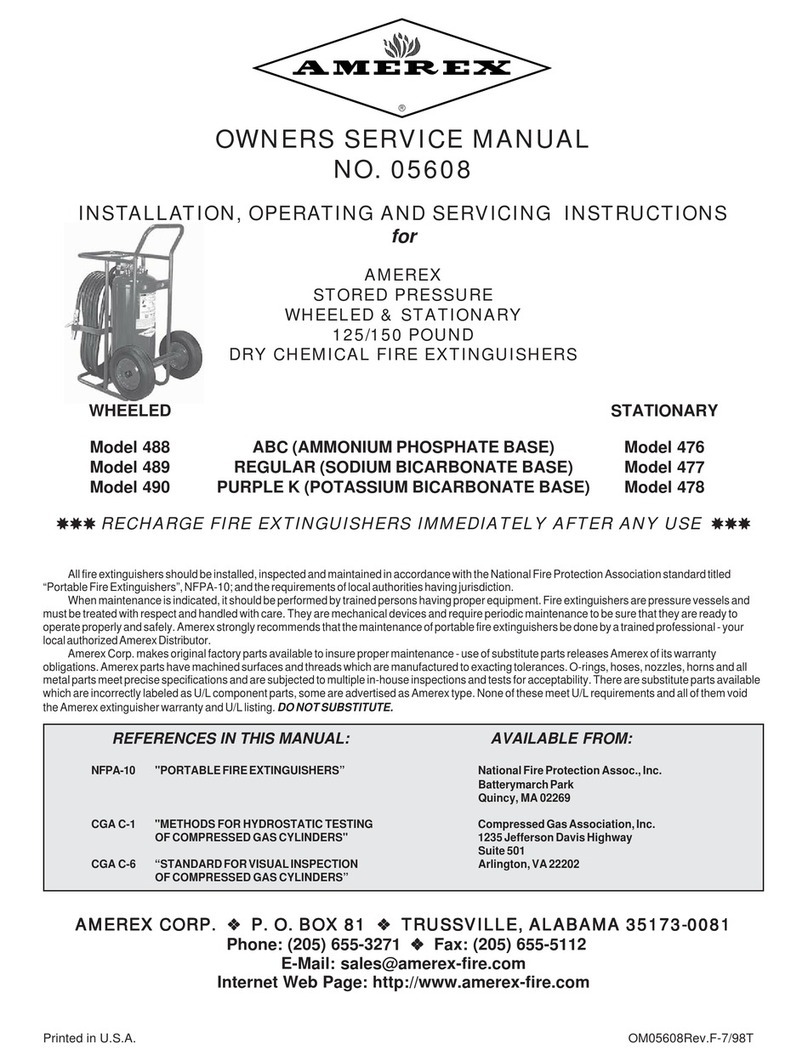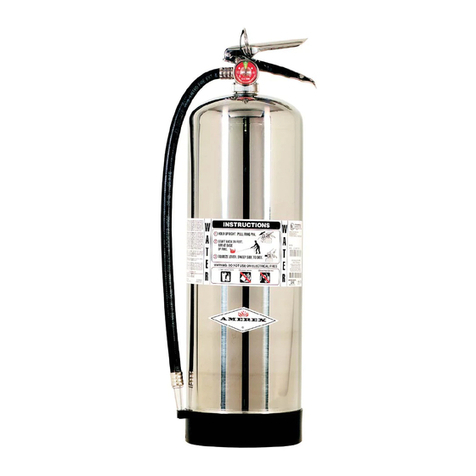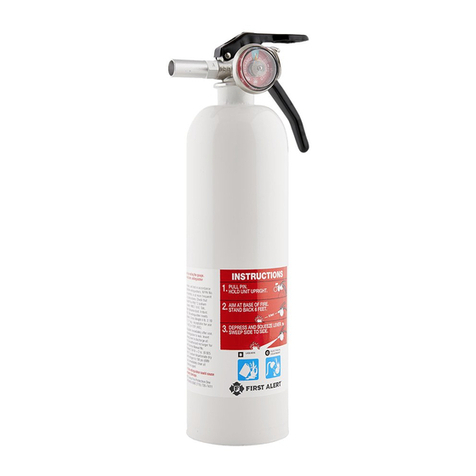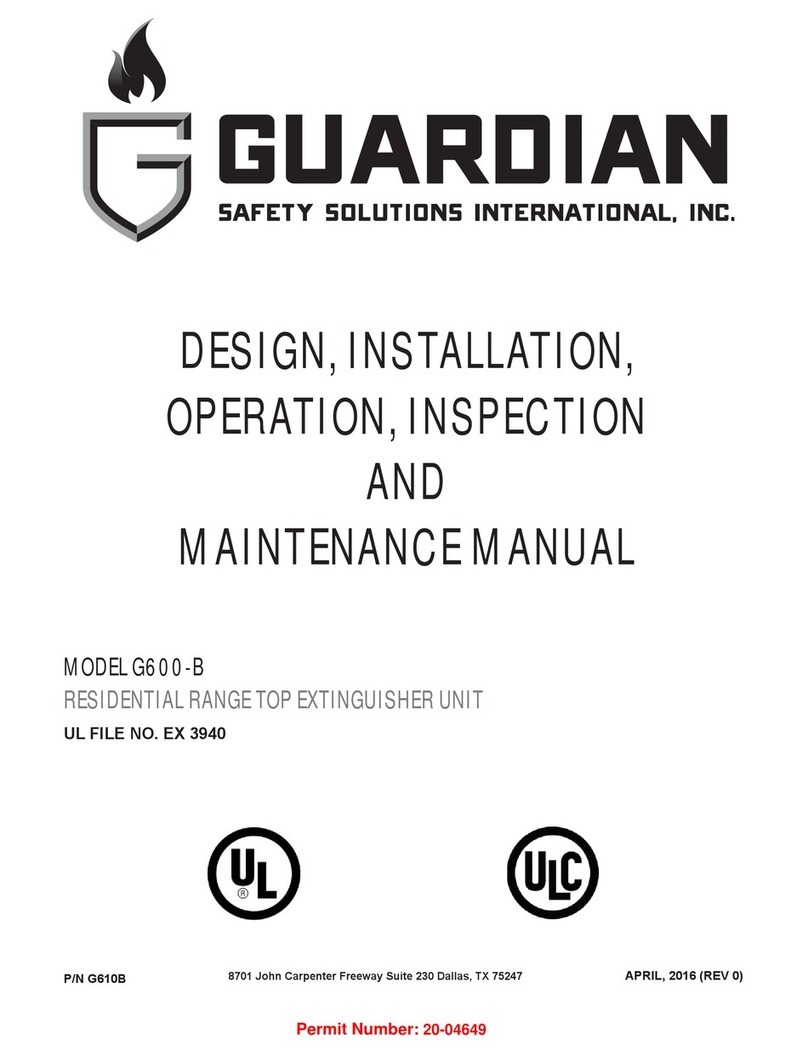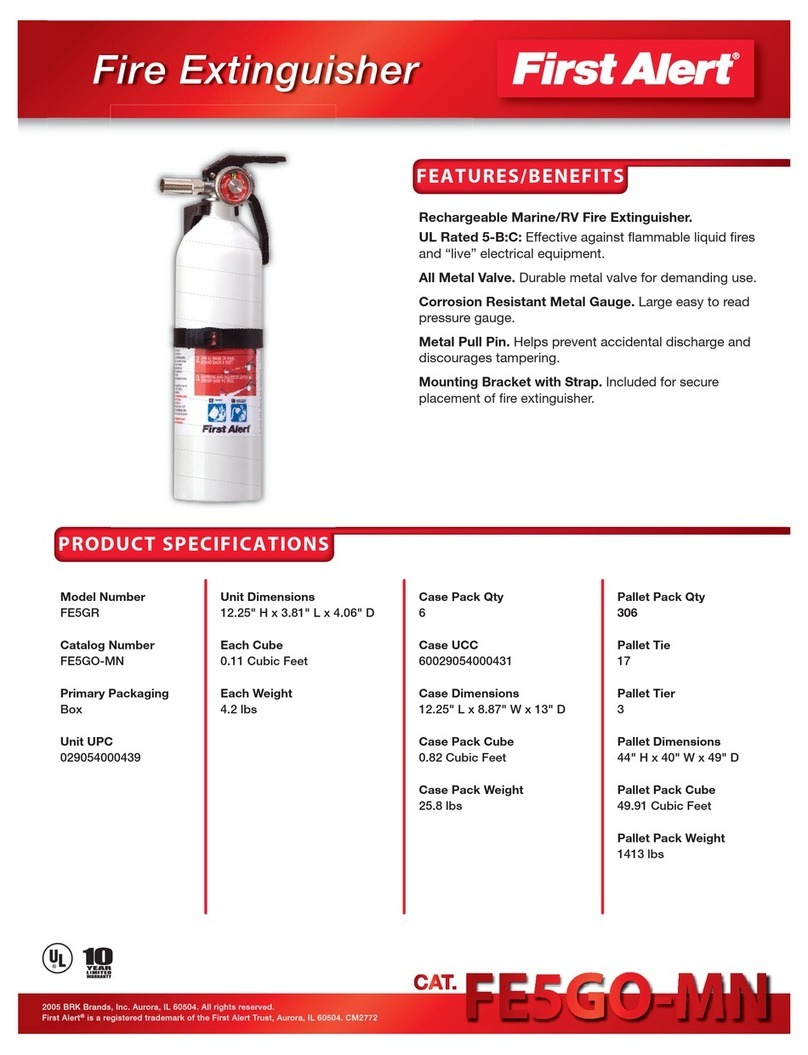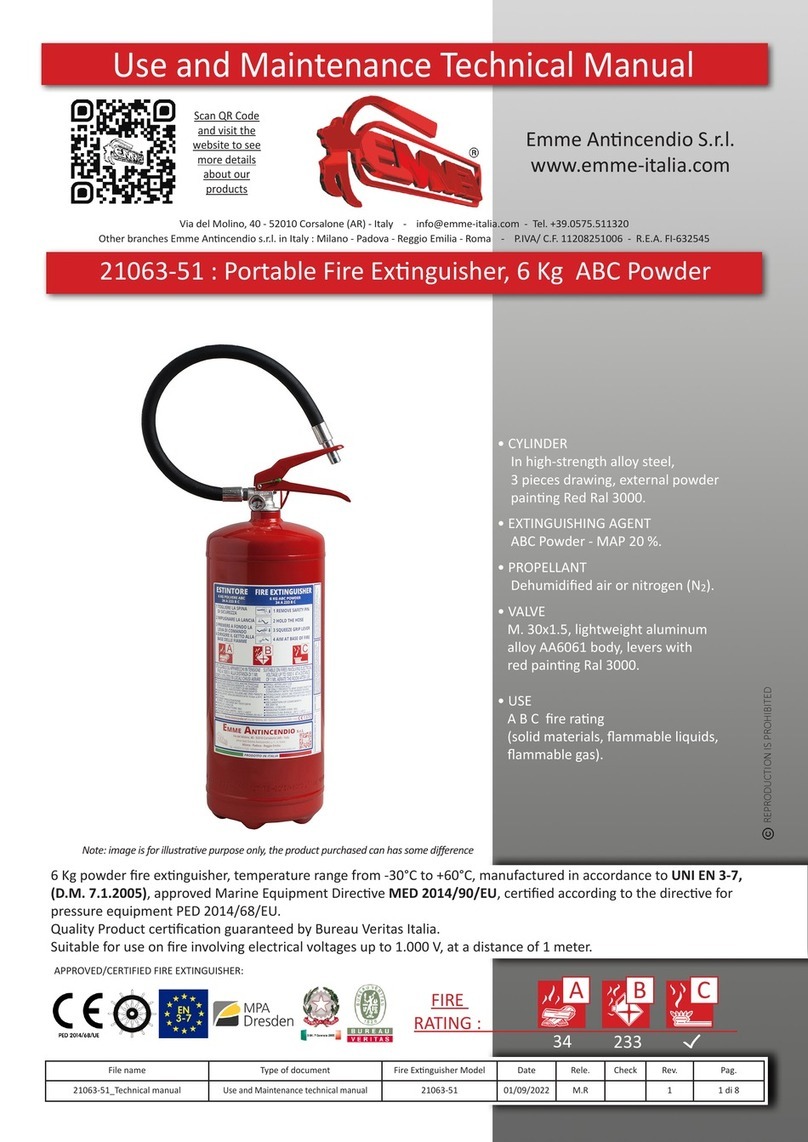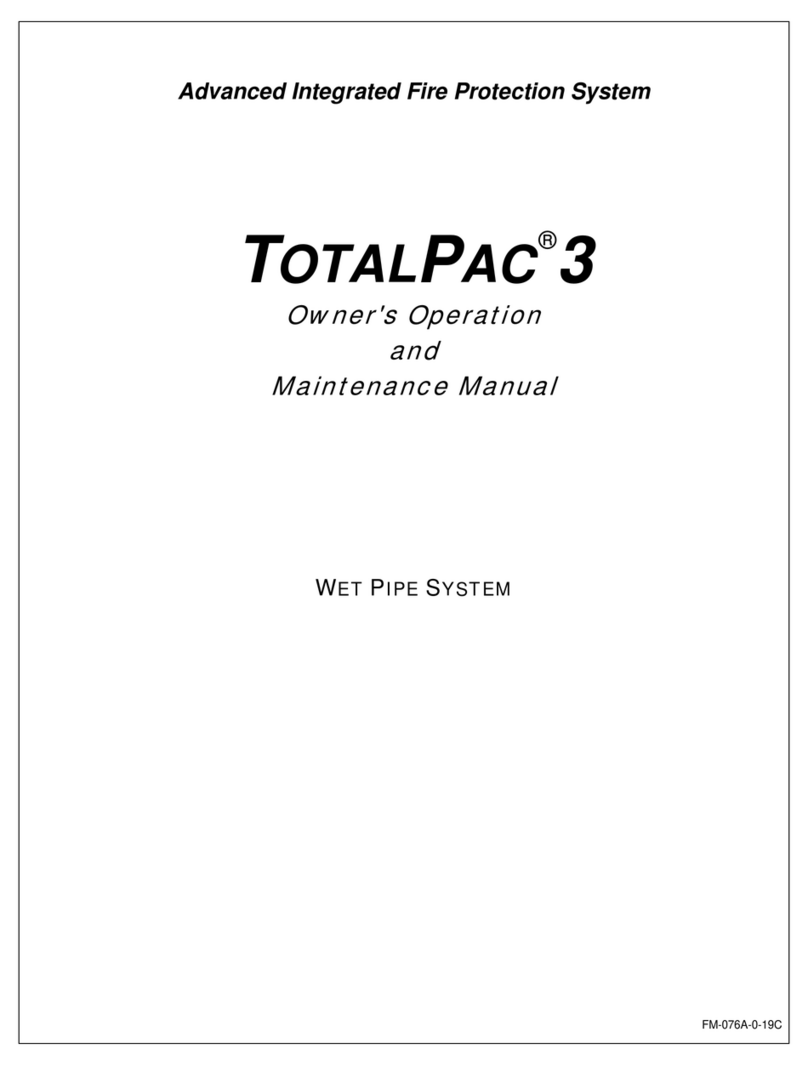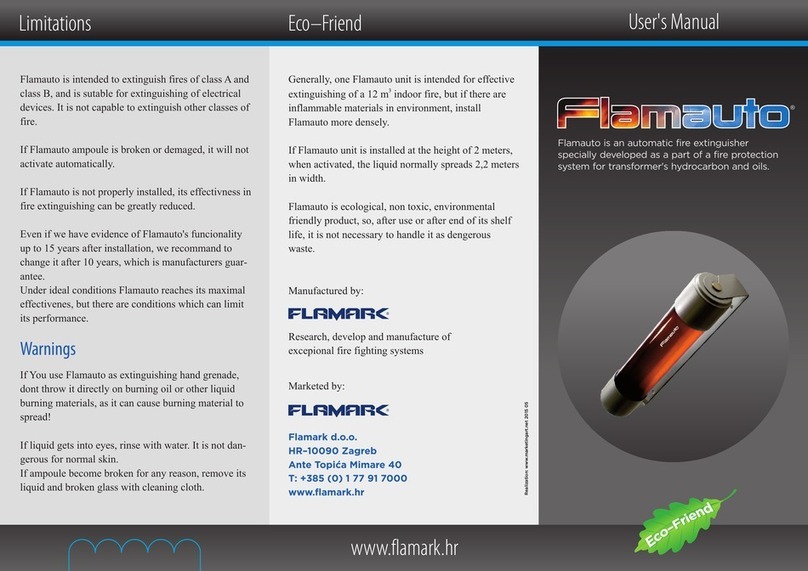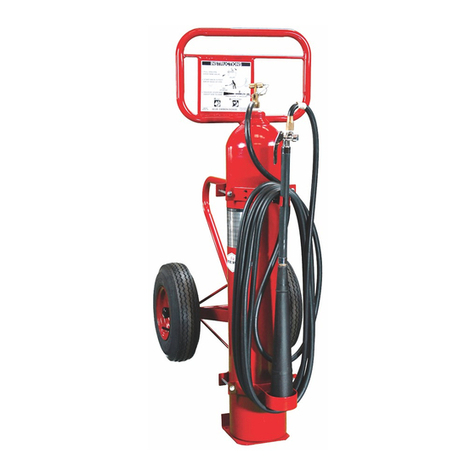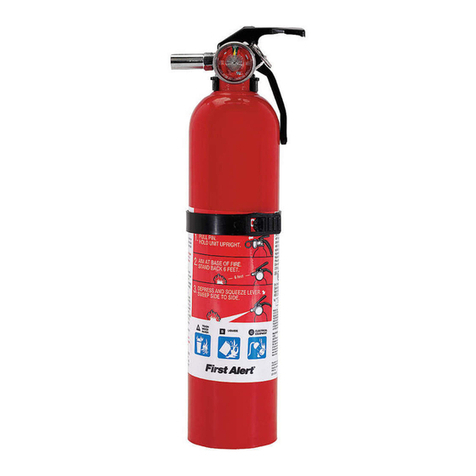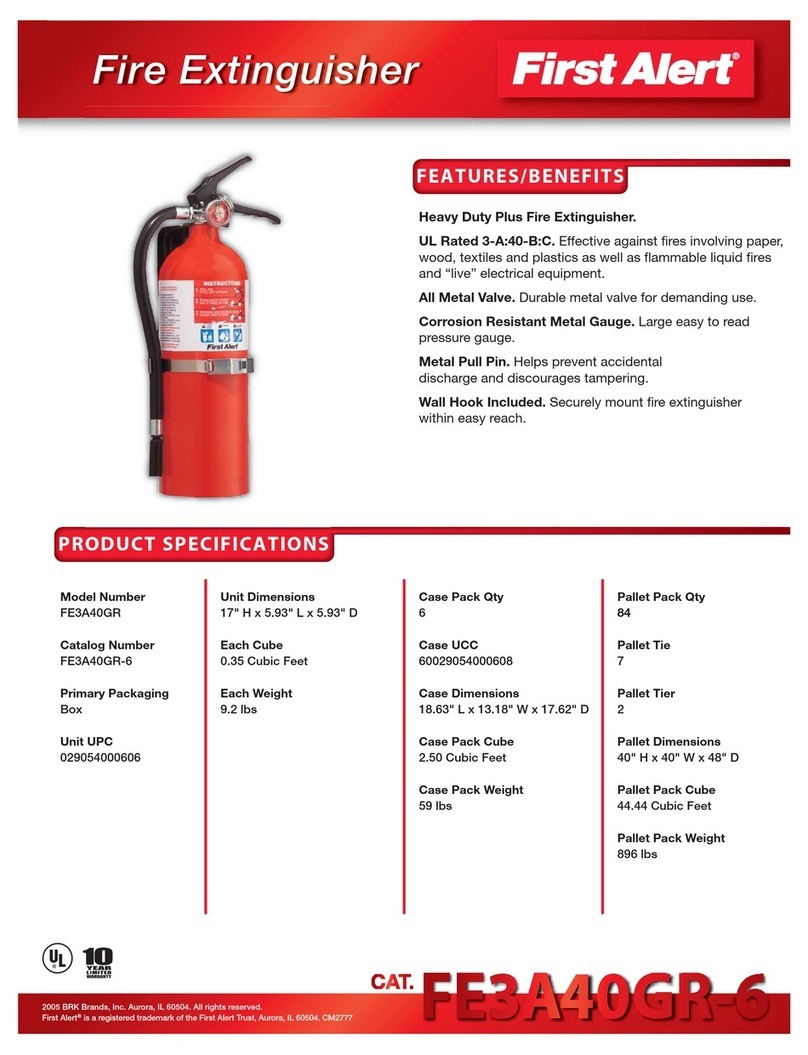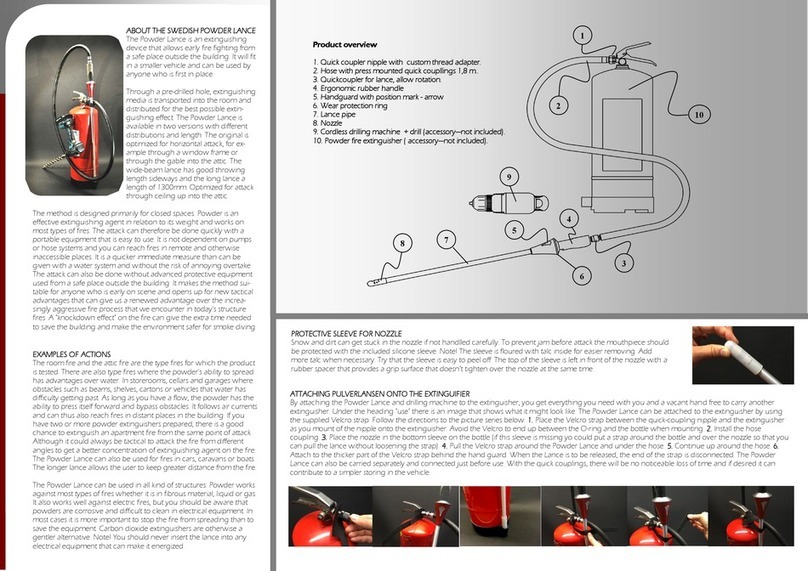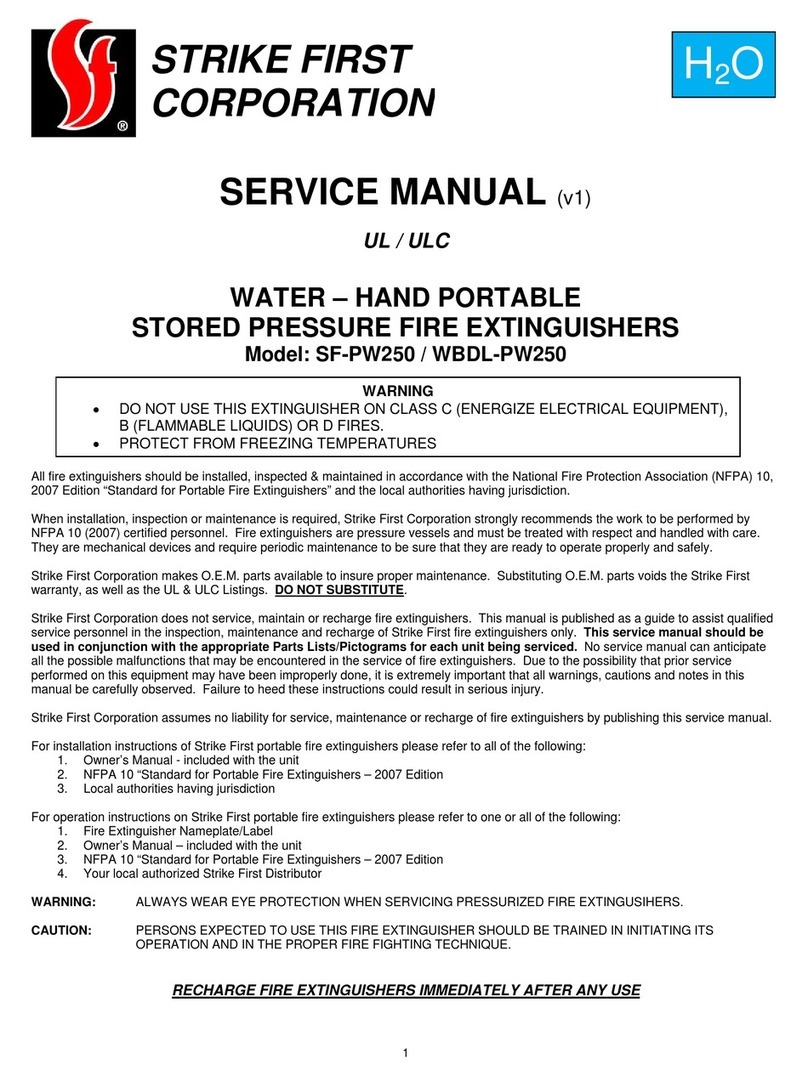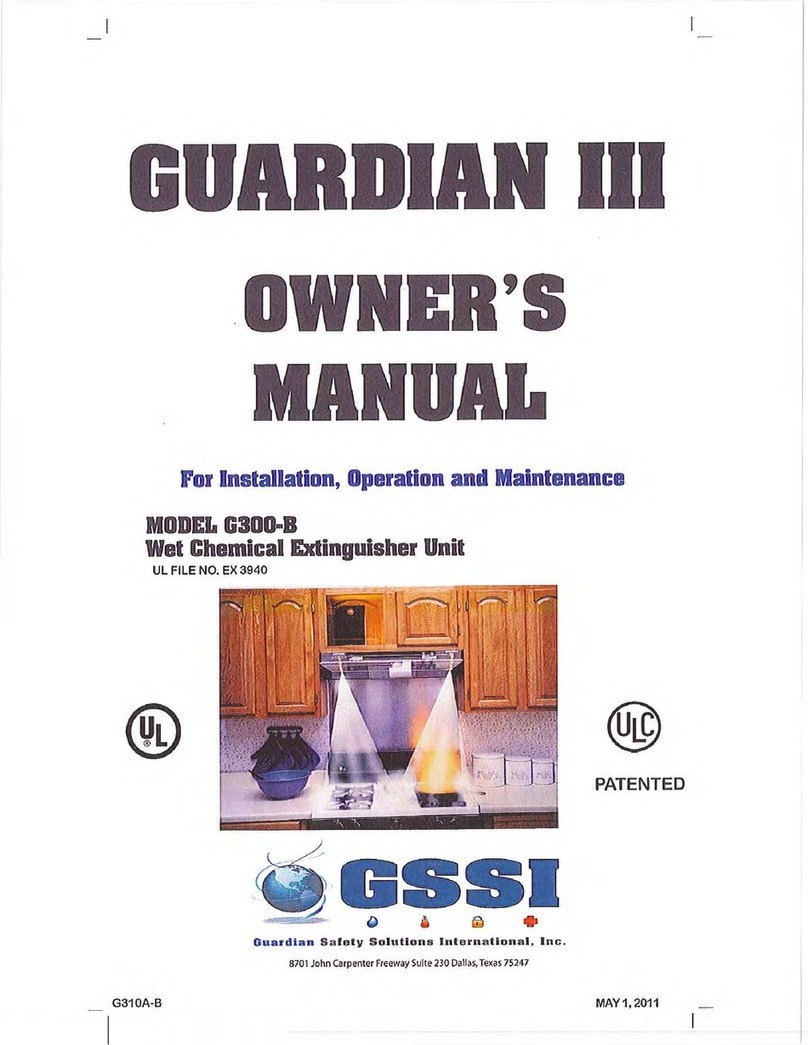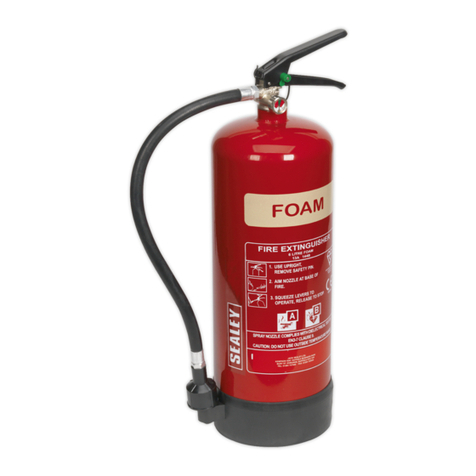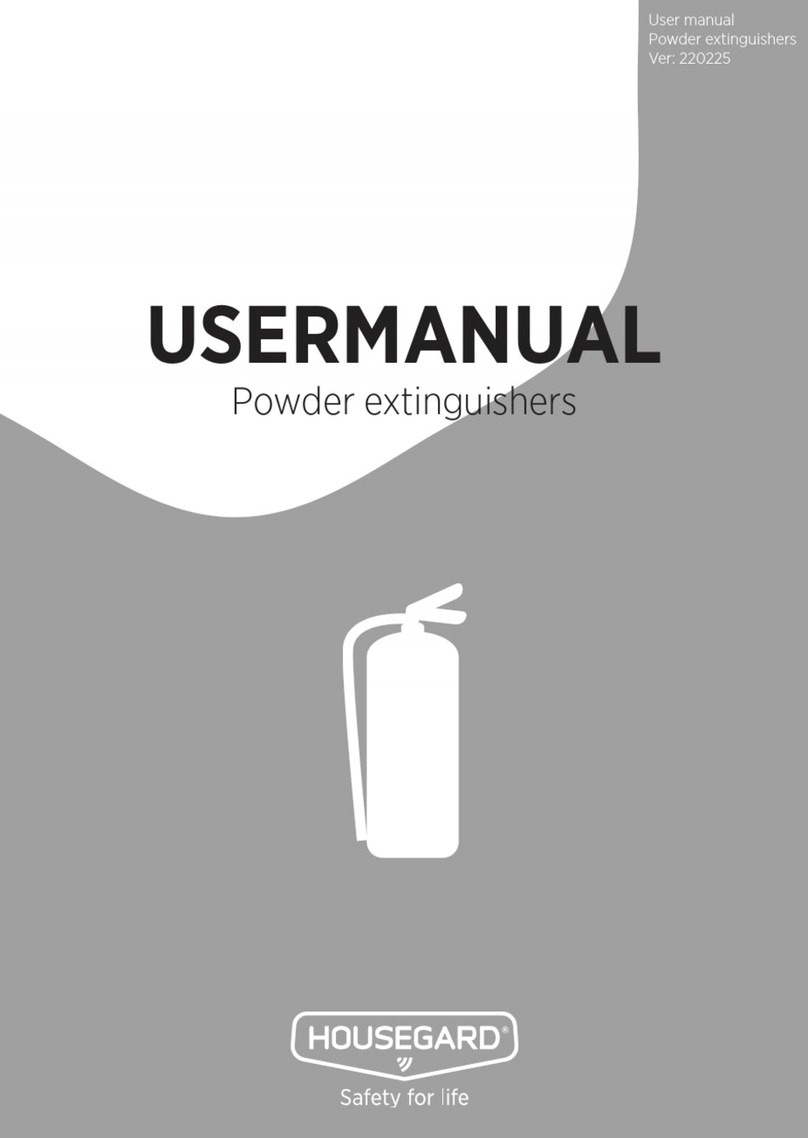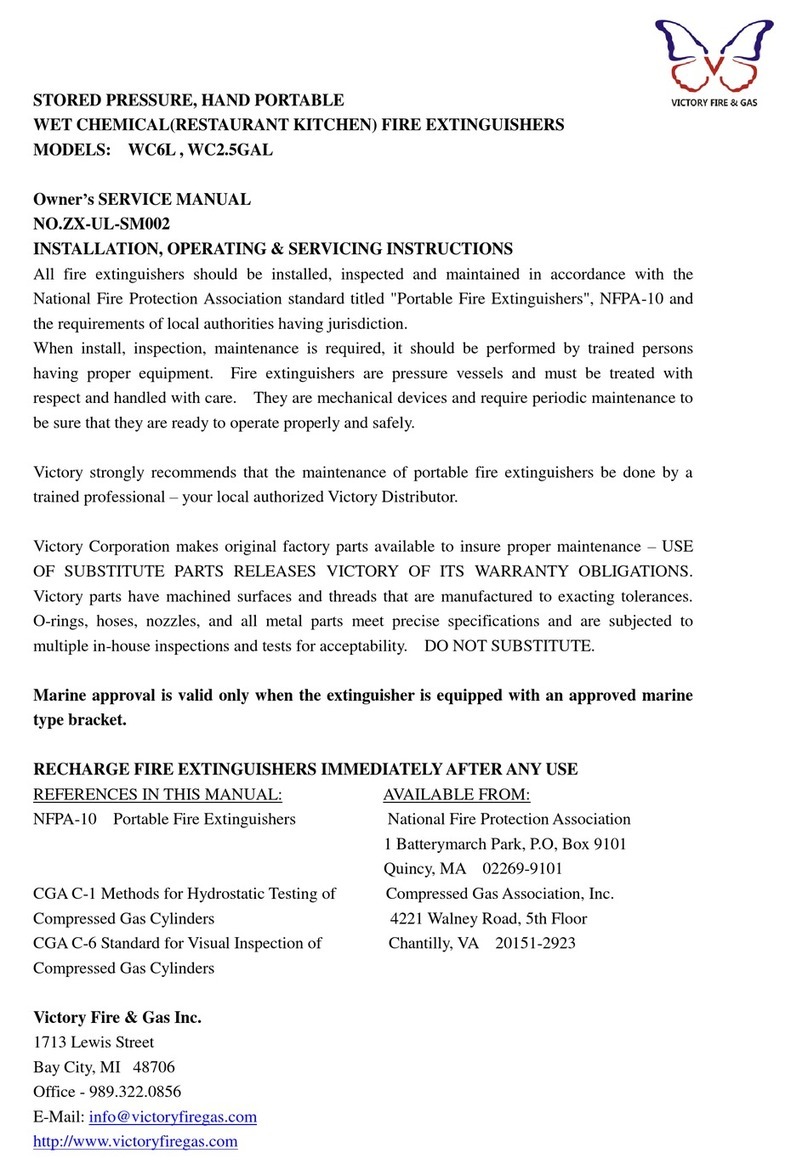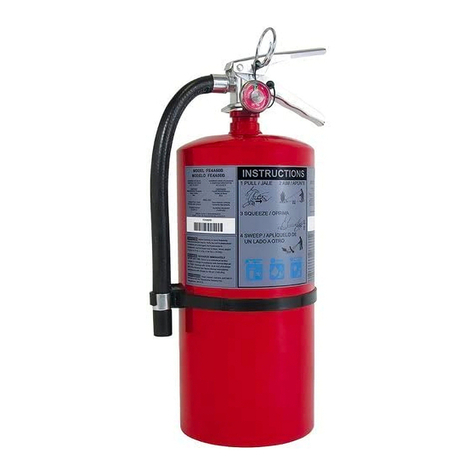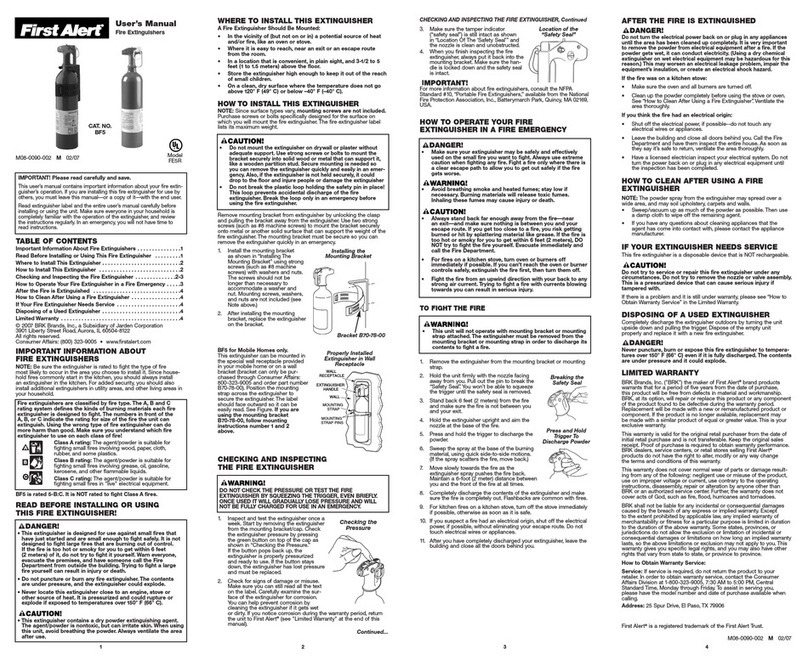
3
INSPECTING THE EXTINGUISHER
This extinguisher should be inspected at regular intervals (monthly or more often if
circumstances dictate) to insure that it is ready for use. Inspection is a "quick check"
that a fire extinguisher is available and is in operating condition. It is intended to give
reasonable assurance that the fire extinguisher is fully charged. This is done by
verifying that it is in its designated place, that it has not been actuated or tampered
with, and that there is no obvious physical damage or condition to prevent its operation.
PERIODIC INSPECTION PROCEDURES
(Monthly or more often if circumstances dictate)
[NFPA-10] Periodic inspection of fire extinguishers shall include a check of at least the following items:
1. Location in designated place.
2. No obstruction to access or visibility.
3. Operating instructions on nameplate and facing outward.
4. Safety seals and tamper indicators not broken or missing.
5. Examination for obvious physical damage, corrosion, leakage, or clogged nozzle.
6. Determine fullness by weighing or hefting.
MAINTENANCE
[NFPA-10] At least once a year or more frequently if circumstances require, maintenance
should be performed. Maintenance is a "thorough check" of the extinguisher. It is intended to
give maximum assurance that a fire extinguisher will operate effectively and safely. It includes
a thorough examination for physical damage or condition to prevent its operation and any
necessary repair or replacement. It will normally reveal if hydrostatic testing or internal
maintenance is required.
MAINTENANCE –SERVICE PROCEDURE
1. Clean extinguisher to remove dirt, grease or foreign material. Check to make sure that the
instruction nameplate is securely attached and legible. Inspect the cylinders for corrosion,
abrasion, dents or weld damage. If any damage is found, hydrostatically test in accordance with
instructions in CGA C-1 and C-6 and NFPA 10.
2. Inspect the extinguisher for damaged, missing or substitute parts. Only factory replacement
parts are approved for use on Amerex fire extinguishers.
3. Weigh the extinguisher and compare with weight printed in the "Maintenance" section on the
nameplate (label). Recharge extinguisher if weight is not within indicated allowable tolerances.
4. Check the date of manufacture stamped on the cylinder dome. The agent cylinder must be
hydrostatically tested every 5 years to the test pressure indicated on the nameplate in
accordance with DOT requirements.

